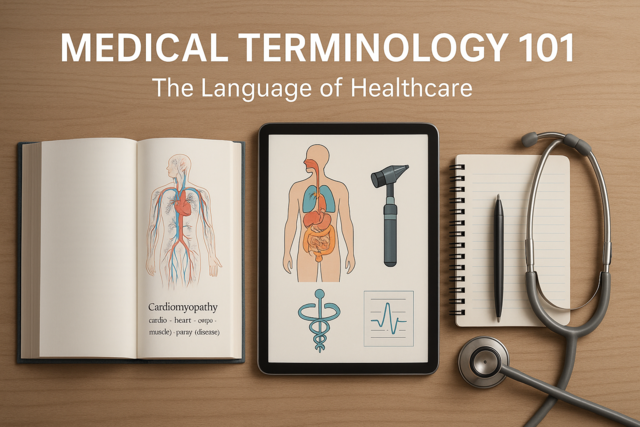Introduction
In this article, we'll cover some ideas and suggestions for taking back control of your life and leading as normal of a lifestyle as possible. Of course, you can expect to have some ups and downs, but with practice and adapting some of your activities and habits, you'll find the diabetes doesn't have to slow you down at all.
At Work and at School
In any situation, a person with diabetes needs to monitor and maintain their blood glucose levels. After you've worked out adequate dosages and goals with your doctor, you'll better regulate how you feel on a daily basis. Be prepared to give this some time, as it may take several weeks or even a couple of months for you to adapt to your condition and the ups and downs of your blood glucose levels until you've regulated your blood sugar.
At work and at school, you'll need to watch what you eat. A nutritionist, in conjunction with your doctor or a dietitian, will offer you guidelines of what you can eat, what you should eat, and the foods you should stay away from. Of course, a diabetic should stay away from high-sugar foods, but this doesn't mean you'll never be able to enjoy a piece of the chocolate cake or ice cream again.
The key is to maintain self-control and self-discipline when monitoring your condition. Carefully monitor how much you eat, get adequate amounts of exercise, and make some adjustments in your lifestyle at home, at school, and at work so that you feel your best every day.
Individuals who require insulin at certain times of the day may need to arrange with school administration to store insulin in a school office or nurse's office refrigerator. Make sure the school nurse or a receptionist has a copy of your doctor's orders and prescriptions regarding insulin injections, and follow your school's guidelines in the proper use and disposal of syringes and needles.
At work, notify your supervisor of the necessity of insulin injections so that you can store insulin in an office refrigerator, or arrange to purchase a small apartment- size or miniature refrigerator in your office or work environment to store insulin. Keep the safety and security of others in mind and always purchase a sharps container for the disposal of used syringes and hypodermics in work environments.
What Happens When You Exercise?
When you exercise, your body utilizes glucose for energy. During the first 15 to 20 minutes of a workout, your body converts glycogen stored in your muscles and converts it back into glucose. The glucose circulates in your bloodstream, providing energy and fuel for cells and tissues throughout the body.
After the first 15 or 20 minutes of exercise, the body uses up its stores of ready glucose, and the liver kicks into action, converting its own glycogen storage into glucose energy. After those stores are used up, the body will rely on carbohydrates from food for energy. At this point, diabetics, especially those diagnosed with Type One diabetes, may be in danger of hypoglycemia.
Prior to any exercise or activity, it is recommended that diabetics test their blood glucose levels. If the blood glucose level is under 100 mg per deciliter (mg/dL), you'll want to eat a carbohydrate snack before you exercise.
Talk to your doctor about appropriate carbohydrate snacks before and following exercise. Depending on the type of exercise you want to do, its duration and intensity, you may need to eat a fast-acting carbohydrate. In addition, your doctor will help explain how different types of sports and exercise routines alter your blood sugar levels.
Activities
Through proper knowledge and monitoring of your diabetic condition, there's no reason a diabetic can't enjoy the same types of activities as anyone else. The key is carefully monitoring your body's reactions to certain types of exercise and activity. When first starting out, exercise for short periods and be aware of symptoms or reactions in your body that may tell you you're pushing too hard.
Your activity levels will also be determined on whether you're already fairly active, moderately active, or extremely active before you were diagnosed. If you experience any type of leg pain while you're exercising, slow down. Leg pain, cramping or sharp, stabbing pains in the thigh or your calf muscles can be a sign of peripheral vascular disease or intermittent claudication, which are both complications of diabetes.
Walking, gradually increasing your duration and distance, will help improve such conditions, increase cardiovascular health and circulation, and prepare your body for more intense forms of exercise.
Carefully monitor your exercise intensity when starting an exercise program in order to determine how your body reacts to increased blood sugar levels during exercise, exercise is recommended for individuals with diabetes. Exercise has been shown to help lower blood glucose levels as well as increase and improve cardiovascular health. Individuals who have contracted Type Two diabetes due to being overweight may find their condition improves through exercise and weight loss.
However, diabetics needed take some precautions when exercising. You want to avoid complications such as hyperglycemia or hypoglycemia, which is high or low blood sugar.
You'll also want to make sure that you snack appropriately before and after exercise to help maintain your blood sugar levels. Such snacks will depend on your blood glucose readings as well as the type and duration of workout you choose.
Most people with Type Two diabetes who exercise moderately don't require a snack before exercise, but those diagnosed with Type One diabetes should snack on roughly 15 grams of carbohydrates about 30 minutes before they plan on exercising. High intensity or high-energy exercises or activities and sports may require anywhere between 25 and 50 grams of carbohydrate ingestion.
For those engaged in long-distance running or biking activities, you also need to ingest adequate amounts of protein or fat to help carbohydrates last longer over a longer period. If you plan on walking for exercise and your blood sugar levels are within desired readings as determined by your doctor, you may not need to ingest carbs prior to exercise.
When it comes to exercising, again start slow and exercise for 15 to 30 minutes a day. Follow your doctor's instructions regarding recommended types of exercise as well as intensity and duration when first starting out.
Conclusion
A person with diabetes doesn't have to live any differently than anyone else. Making changes in lifestyle and adapting your habits to being more aware of how your body feels and its needs or habits may take a little time to develop and become accustomed to, but in no way should slow down your enjoyment of activities, participation in sports or exercise, or enjoying anything from snowboarding to water skiing.
Introduction
Under most circumstances, diabetes can be managed and individuals can engage in normal daily activities without any problems. However, there are times when diabetic complications may arise. Understanding the basics regarding a few of these will help you identify when something just isn't right with your body.
It should be said before we even start this article, to avoid the temptation to self- diagnose. If you feel that something is just not right with your body, or in the behavior or symptoms of a loved one diagnosed with diabetes, make an appointment with your family care provider.
Hypoglycemia
Hypoglycemia is a condition where the blood sugar levels are extremely low or by a reaction to insulin, and can occur quite quickly. Individuals diagnosed with Type One diabetes are more liable to experience lower levels of glucose than those with Type Two diabetes, although any diabetic should be aware of the condition and its accompanying symptoms.
Just as with blood pressure and pulse rates, what may be low to one person is not extremely low to another. Talk to your doctor about your blood glucose levels and what may be constituted as "low" medically for you. For example, some people may start feeling sensations of low blood sugar at around 70 mg per deciliter, while others feel perfectly fine. For such individuals, blood sugar levels must dip a bit lower before they notice symptoms.
Lowered blood sugar levels may be caused by several different factors including not eating food, or the wrong type of food, exercising without ingesting some carbohydrates beforehand , or taking too much insulin.
You can avoid a roller-coaster effect when trying to raise blood sugar levels by eating a quickly dissolving or quick-acting carbohydrate or sugar product when you start feeling symptoms. Eat the fast-acting carbohydrate or sugar product at a moderate pace, wait a few minutes, and then check your blood levels. You can continue to do this slowly until your blood sugar levels return to what are considered normal for you.
Roughly, 10 to 15 grams of a fast-acting carbohydrate should be ingested. Examples of a fast-acting carbohydrate sources include:
- A small glass of orange juice
- A glass of low fat or nonfat milk
- 4 to 6 ounces of regular soda
- A small handful of raisins
Ingest a fast-acting carbohydrate as soon as you feel symptoms of confusion, shaking or any indication that you just don't feel right. You don't want your blood sugar levels to drop so low that you feel faint or begin to lose consciousness. Some of the other common symptoms of hypoglycemia include:
- Heart palpitations
- Sudden bouts of sweating
- Pale skin or cold, clammy feeling on your skin
- Erratic mood swings or unexplained irritability
- Disorientation to time or place
You should start to feel better if you ingest a fast-acting carbohydrate or sugar product within 15 minutes of feeling any of the above symptoms. You can also purchase glucose tablets to carry in your purse or wallet for emergencies. Sweet candies like Sprees, Lifesavers, and Sweet Tarts are also adequate and effective in rapidly increasing your blood sugar level.
Most people don't carry their blood glucose monitor around with them, so gauge your feelings and use your gut instincts and reactions in such circumstances. Stay away from fatty carbohydrates and sugars like ice cream, doughnuts, or chocolate candy bars. Fat contained in these products can delay fast absorption of sugars in your body. Get into the habit of having several fast-acting carbohydrates or sugars on your person, in a purse, in your car, if your desk at work, or at home to avoid more serious complications.
Hyperglycemia
Hyperglycemia is a condition caused by high levels of blood glucose. If your blood glucose reaches over 250 mg per deciliter, you may experience a further complication called diabetic ketoacidosis. This type of reaction is more common in individuals diagnosed with Type One diabetes, though it does occur with those with other types of diabetes. This condition is caused by a lack of insulin in the body, to the point where fat breaks down for energy. Metabolism of fat initiates the creation of ketones, whose presence can contribute to acid imbalances in the bloodstream.
Some of the most common signs or symptoms of hyperglycemia or diabetic ketoacidosis include:
- Foul smelling breath
- Muscle ache, fatigue or stiffness
- Difficult or rapid breathing
- Nausea and or vomiting
- Confusion
- In severe cases, unconsciousness, and in very extreme cases, coma.
A number of factors can increase blood sugar levels, including stress, infection, illness, and injuries. Not drinking enough water and losing fluids through diarrhea and vomiting can also increase blood glucose levels.
Medical experts recommend that individuals never skip their insulin dosage or diabetic medication even if you're ill, as illness does cause blood sugar levels to increase. Skipping meals or medications can worsen the situation, and may require even more insulin than normal. Individuals who are sick or who have been injured should talk to their doctor about adequate insulin dosages.
-
Retinopathy
-
Retinopathy is a condition that affects your eyesight. For diabetics, retinopathy is the major cause of blindness in adults and is caused by leaking of blood vessels that attach to the retina of the eye. Blockage of these blood vessels is also responsible for blindness. Other common symptoms for diabetics include macular edema, or swelling of the macula, a part of the retina. This can cause blurred vision.
Unfortunately, many of these symptoms associated with retinopathy don't appear until the condition has reached an advanced state. Some individuals may benefit from laser treatments, but this will depend on the severity and progression of the disease.
Diabetics should have their eyes checked at least once a year, and undergo a dilated eye exam in order to detect diabetic retinopathy or other diabetic-related conditions early.
Note- Individuals who don't control their blood glucose levels are four times more likely to develop retinopathy than those who carefully monitor their condition.
Neuropathy
Neuropathy is a medical term used to define damage to nerve cells or structures. Neuropathies can occur in any part of the body serviced by nerves, though one of the most common forms of such a complication is called peripheral neuropathy. This condition is caused by interrupted nerve impulses in the lower extremities. Peripheral neuropathy often affects the hands or the feet and may cause sensations like tingling or burning, or as if you're feeling "pins and needles." Numbness, pain, muscle weakness and some slowed reflexes are often common.
Individuals diagnosed with any form of diabetes have an increased risk of nerve damage, stroke and cognitive function impairment. Doctors are not quite sure how diabetes damages nerves, but it is believed that chronic or long-term increased blood glucose levels can damage nerve cells. Peripheral neuropathy can affect either a small area of the body or large areas of the body.
Another common form of neuropathy is called autonomic neuropathy, which affects areas of the body you have no control over, such as your eyesight, blood pressure, bladder function, and even how frequently you perspire or salivate.
Autonomic neuropathy can affect many different body symptoms, including:
- Cardiovascular
- Genital urinary
- Digestive
- Pseudo motor
- Eyesight
Complications regarding nerve conduction and function can result in a number of neurological as well as musculoskeletal complications. Range of motion exercise and communication with your doctor, coupled with early treatment advice and methods with your physician may help reduce incidences of limited range of motion, numbness, and tingling caused by a variety of conditions. Carpal tunnel syndrome, and a condition called Dupuytren's contracture, including trigger finger, may be alleviated through physical therapy as well as anti-inflammatory medications.
Cardiovascular Disease
Individuals diagnosed with diabetes are also at an increased risk for cardiovascular disease. Atherosclerotic and coronary artery disease are common in individuals who are overweight or obese. In cases where individuals contract diabetes due to their weight condition, chances increase that the individual has also been diagnosed with high cholesterol, high blood pressure, and some degree of a cardiovascular complication.
Individuals diagnosed with diabetes are also at an increased risk for heart disease or stroke. In order to reduce cardiovascular complications, the National Diabetes Education Program in conjunction with the Department of Health and Human Services recommends that individuals keep their blood pressure under 130/80, and their LDL or low-density lipoprotein, cholesterol levels under 100.
Those with diabetes should also be very aware of atherosclerosis, or blockage of the arteries that can lead to coronary artery disease. Unfortunately, symptoms for these conditions don't usually display themselves until a blood vessel has become seriously blocked. Some of the most common symptoms of coronary artery disease include but are not limited to:
- Shortness of breath
- Arrhythmia (irregular heartbeat)
- Angina (chest pain)
- Pain in the jaw or neck
- Pressure or tightness in the chest
- Nausea
- Pain in the left arm or shoulder
Other common conditions to diabetics related to cardiovascular health and wellness also include hypertension, or high blood pressure. Nearly 65% of individuals diagnosed with diabetes have also been diagnosed with hypertension, or blood pressure that hovers around 130/80.
Conditions like peripheral vascular disease are common in the legs. Some of the most common symptoms of peripheral vascular disease include:
- Numb legs or feet
- Bruises, cuts, sores or skin ulcers on the lower extremities that are very slow or refuse to heal
- Cold feet and legs
- Cramps in the legs or calves, typically when walking. This condition is called intermittent claudication.
Individuals should know that conditions like peripheral vascular disease may be improved drastically by simply walking every day. Other diabetic complications such as hypertension may also be reduced through increased amounts of exercise and proper diet.
Conclusion
Several other diabetic related complications and illnesses are associated with a diabetic diagnosis. Kidney disease, edema, blood vessel damage, and cataracts and glaucoma are commonly found in individuals who don't take adequate control of their diabetic conditions. Individuals may also experience complications related to the digestive system, as well as skin problems.
The importance of carefully monitoring your diabetes is essential for the health of everyone, but most specifically the elderly. .































